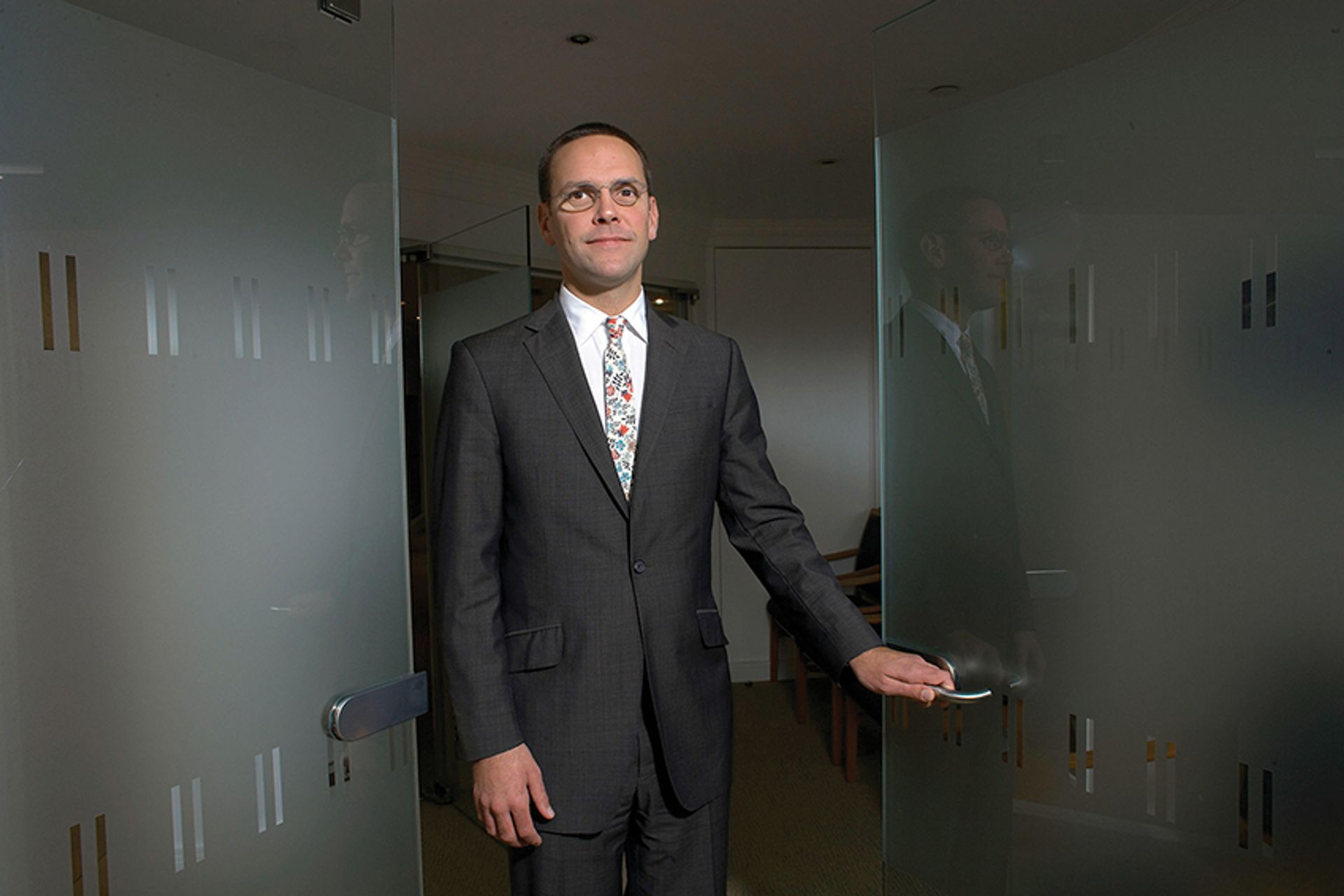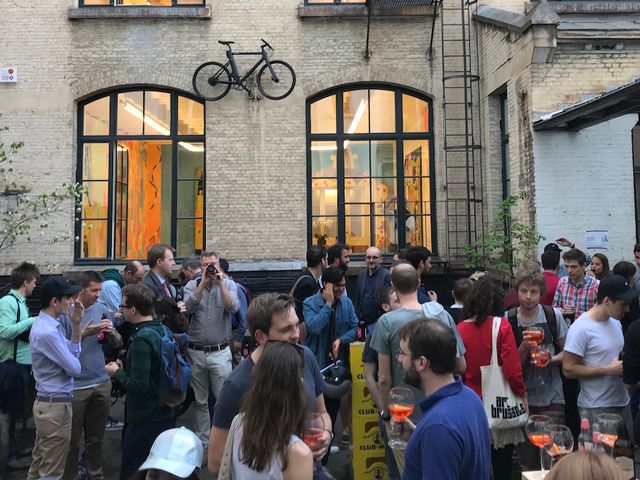The shock announcement at the start of this year that Réunion des Musées Nationaux–Grand Palais has decided to replace France’s own Foire Internationale d’Art Contemporain (Fiac) with Art Basel for its contemporary and Modern art week in Paris in October felt like a defining moment in the tectonics of international art fairs.
Fiac, owned by RX France (part of the Anglo-Dutch group RELX), which also owns the Paris Photo fair, occupied the glass-domed splendour of the Grand Palais for that autumn week from 2006 to 2020. Last year, it decamped to the venue’s temporary exhibition complex near the Eiffel Tower while the Grand Palais undergoes a €600m renovation.
After almost half a century of annual editions, Fiac had seemed a permanent feature of the Parisian cultural landscape. The scaled-down 2021 edition was typically French in flavour, with about a quarter of the 171 exhibitors being home-based. Yet Fiac had also been the only remaining large-scale fair of contemporary and Modern art, outside the Frieze and Art Basel franchises, that was capable, at least on paper, of attracting serious international collectors.
However, RX alienated RMN-Grand Palais by not paying the outstanding €630,000 rent for the 2020 Fiac and Paris Photo fairs, both of which had to be cancelled because of the pandemic, although the Grand Palais will continue to host Paris Photo.
Jocelyn Wolff, a prominent Paris-based contemporary art dealer who regularly exhibited at Fiac, approves of the shift. “There’s so much artistic energy in Paris at the moment,” says Wolff, who is also enthused by the recent opening of François Pinault’s long-awaited Bourse de Commerce museum of contemporary art, as well as by the arrival of international galleries such as Skarstedt, Mariane Ibrahim and White Cube. “I think that buyers will come because of the galleries. The challenge is now more for Art Basel in Basel.”
So now the top end of the contemporary art fair scene is dominated by Frieze (owned by Hollywood-based entertainment group Endeavor) and Art Basel (owned by Swiss-based MCH group, with a controlling investment from James Murdoch’s Lupa Systems). Frieze runs prestige events in London, Los Angeles, New York and (from this September) Seoul, while Art Basel has rival fairs in Hong Kong, Miami, London, Basel and, now, Paris. MCH paid €10.6m for a seven-year contract with the Grand Palais to stage a contemporary and Modern art fair. It has also just bought a 15% stake in ART SG, a new fair in Singapore, just in case things go pear-shaped in Hong Kong.

Enter the dragon: James Murdoch’s Lupa is investing heavily in Art Basel parent MCH © Horst Friedrichs/Alamy
Fool’s gold
“Loving how everybody just thinks Art Basel will make their city the center of the world,” Daniel Hug, the director of Art Cologne, the oldest of all contemporary art fairs, fulminated on Instagram after the news broke in Paris. “MCH Group is only interested in making money and keeping Art Basel the number one fair in the world,” he added. “Ultimately, it means Paris will never have an art fair of equal stature to Basel, ever.”
It is worth trying to get some perspective here. Prior to Covid-19, the outspoken Belgian collector Alain Servais would visit dozens of these events around the world every year. He points out that contemporary art fairs are an intrinsically defective business model that only works, just about, if multinational companies can achieve economies of scale (as is the case with Art Basel and Frieze), or if the event has institutional support (as do Arco Madrid and Artissima in Turin).
Ultimately, it means Paris will never have an art fair of equal stature to Basel, everDaniel Hug, director Art Cologne
“These are one-week events in 52 weeks requiring a team and services. It doesn’t work. Galleries have become more demanding. Fairs are now more expensive to run,” says Servais, who thinks that most, if not all, fair organisers struggle to cover their costs through a week of stand rentals, ticket sales, online initiatives and sponsorship deals. “An art fair isn’t a profit centre, it’s a beacon of the ecosystem,” adds Servais, who believes such events should develop more collaborative initiatives with dealer networks to sustain business throughout the year.
But discussions about the future of art fairs always have one or two unmentionable elephants in the room. The most successful fairs are, in essence, events at which lots of very rich people spend lots of money on very expensive art. In recent years, Frieze London and Art Basel in Switzerland have gained a reputation for being this kind of event. Fiac has not.
In October, at the last edition of the French fair, the mega-gallerist David Zwirner issued a press statement, proclaiming that “Paris is such a great city for a fair, but Fiac has tended to underperform for us.” Sales had left Zwirner feeling “a little disappointed”, and he compared the atmosphere at Fiac unfavourably with the “vibrancy of Frieze” earlier in the month. There was, he said, a shortage of buyers for works priced at more than $500,000. Zwirner’s very public criticisms now seem all the more pointed given Art Basel’s takeover.
So, is Paris such a great place for an international fair? To be sure, the city has tremendous museums, and, thanks to Brexit, more international galleries are choosing to set up shop in the French capital. Pinault and Bernard Arnault, two of the world’s wealthiest and most influential art collectors, run luxury goods empires based in Paris.
But France also puts more effort than the UK and Switzerland into taxing the super-rich, even after the dramatic cut in wealth tax under President Macron. The research group New World Wealth estimated that between 2000 and 2016 (just before Macron’s wealth tax reforms kicked in), 60,000 millionaires left France.
Is Paris really taking London’s art crown?
Meanwhile the UK, along with its overseas territories, remains the “money laundering capital of the world,” as Andrew Mitchell, a Conservative MP and former cabinet minister, said in October 2021 after the publication of the Pandora Papers, an exposé of the secret financial systems that benefit the world’s wealthiest. According to Forbes, London is home to 63 billionaires, putting it seventh in the league table of cities with most billionaires. Beijing is top, with 100. Paris doesn’t even make the top ten.
Magnet for magnates
Brexit and Covid might have battered the UK’s domestic economy, but London’s light regulation and bloated real estate values still attract enormous amounts of unmonitored foreign cash. Some of this gets splashed on big-ticket items at events like Frieze London or the MCH-owned Masterpiece London fair.
Similarly, Switzerland’s low taxes, freeports and private banking systems over the years have helped Art Basel (founded 1970) to supersede Art Cologne (founded 1967) as mainland Europe’s pre-eminent contemporary art fair.
A hatred of tax, as much as a love of art, seems to be the key to a successful international art fair. That said, at 5.5%, France does have the lowest level of import VAT on art of any major EU nation, the Paris art scene is resurgent, and the city does have a timeless appeal for luxury travellers.
Can Art Basel work its magic in Paris in the same way it has done in Miami Beach and Hong Kong, particularly as RMN-Grand Palais has stipulated the event won’t be branded Art Basel, Paris?
“The show we do in Paris will be quite familiar to those who know the other shows,” says Marc Spiegler, the global director of Art Basel. Whatever the fair is eventually called, he says that it “will be strongly influenced by the city and the country in which it takes place. The show has to reflect the strength of the Paris ecosystem.”
Spiegler adds that when the fair returns to the Grand Palais in 2024, it will be on a similar scale to Art Basel’s events in Miami Beach and Switzerland. French gallerists have been reassured they will remain the core of the event.
“What specifically attracts a global audience to Paris is the specificity of Paris in the autumn,” Spiegler says. “The city is having one of its most vibrant moments in the last century.”
With London diminished by Brexit, and Berlin being overtaken by property developers and tech bros, Paris hopes it can once again become the capital of the European art world. Perhaps it can. But if Paris wants the world to visit its flagship fair of contemporary and Modern art, it also needs to be on the money.





